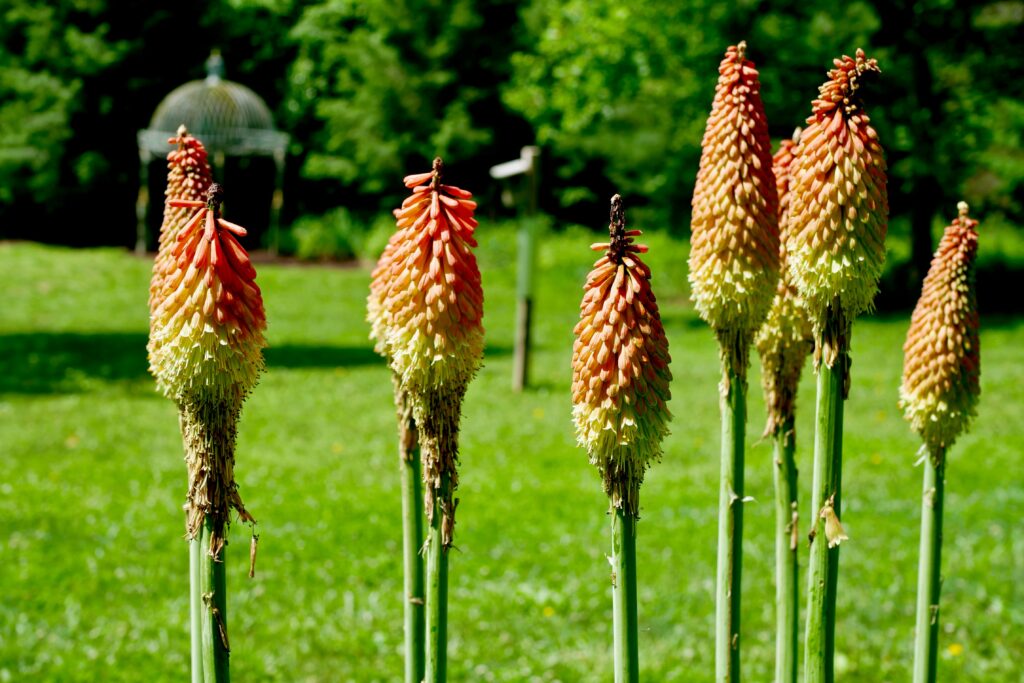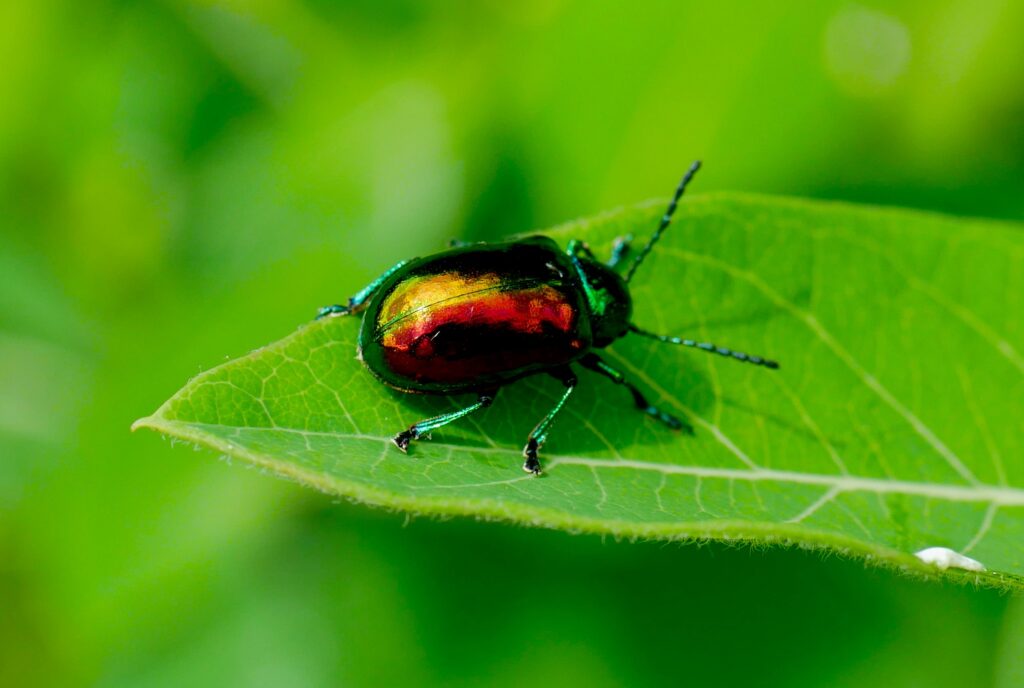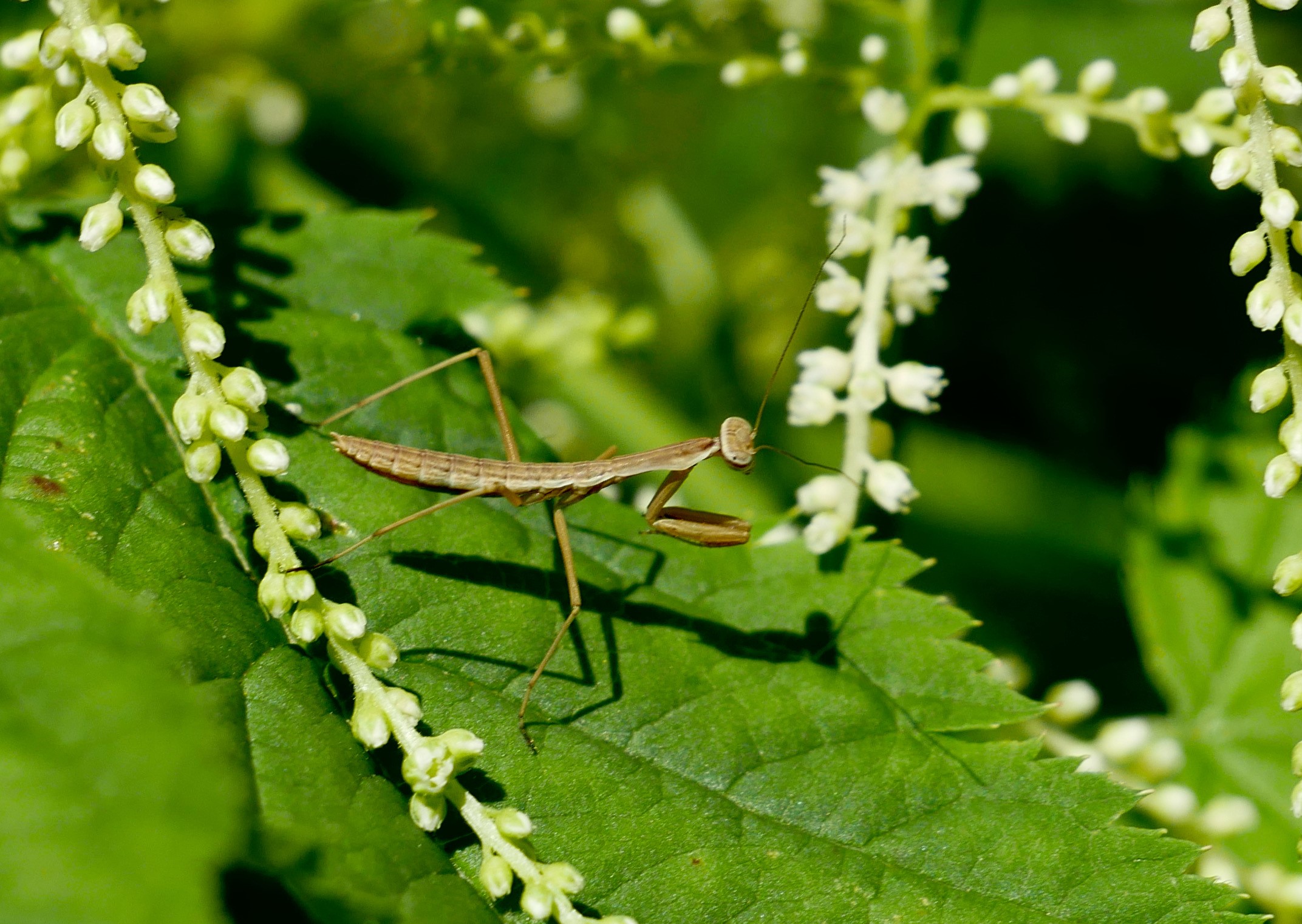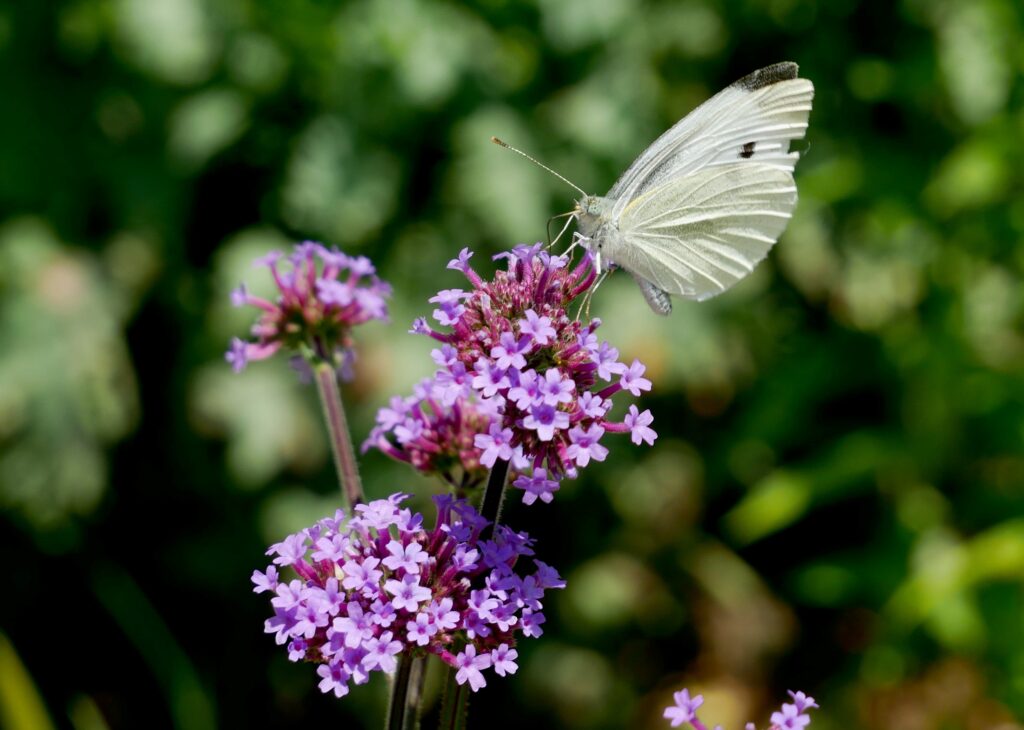by David P. Davis
Newsroom@DominionPost.com
In the unique bloom category, I start with a flower that looks like it should be from Africa, and it turns out that it really is. The torch lily, or red hot poker (Kniphofia), is an herbaceous perennial that has narrow leaves and a yellow-orange, corn-like bloom that sits on a stalk 3-4 feet in height. The torch lily is now blooming near the map kiosk below the parking area.

Also blooming near the main, lower parking area is the prickly pear cactus (Opuntia humifusa). Yes! West Virginia does have a cactus and we have a nice population along the sedum and daylily wall as you park. The prickly pear has a lovely, ephemeral yellow bloom. Later, a reddish, edible fruit is produced, which can be made into a jam or jelly. We also have a larger prickly pear in a lower bed of the Yagle Garden, so keep an eye on that one to bloom soon.

Another unique bloom is the crinum lily, (Crinum spp.) which is a member of the amaryllis family. Crinums are herbaceous perennials that grow from large bulbs. They have long broad leaves arising from their base with large, showy magenta blooms perched on 3-to-4-foot stalks. This flower is a real eye-catcher; each bloom is a composite of several flowers that are up to 6-8 inches long. Crinums are rare in our gardens today, but were actually one of the first flowers hybridized and were very popular in the 18th and 19th century.

This week we feature a real star of the Yagle Garden, tall Brazilian verbena (Verbena bonariensis) and stiff verbena (Verbena rigida). Verbenas have lovely, purple, composite flowers that will bloom into the fall providing a splash of purple all summer long. They are herbaceous perennials that also self-seed the garden presenting the challenge of which to leave, and which to pull. The tall Brazilian verbena tends to dominate the upper reaches of the Yagle Garden in an area that we have spurge and sunflowers. The rigid verbena dominates in a corner of the Yagle Garden where we have a myriad of other plants yet to bloom. In both cases, the purple flowers of the verbena will form a frame for all that is to come.
I finish this week with a couple of insect jewels. The first jewel is truly golden and metallic and can be found on the dogbane in the pollinator beds. The dogbane beetle (Chrysochus auratus), literally meaning ‘made of gold’) is a leaf beetle that sequesters the poisons in dogbane to make itself inedible. The other jewel is a cute, early-instar praying mantis, found on the goat’s beard (Aruncus dioicus) near the Education and Event Building. Turns out, goat’s beard’s long, frilly bloom of white, creamy flowers is a huge hit with all kinds of insects, including bees, beetles, and small wasps. The young praying mantis can now be found in the Yagle Garden trying to make its way in the world.
Come on out to the WVBG and see what you can find!
David P. Davis, Ph.D., gardener at the WVBG. For visiting information, maps, and more, visit WVBG.org.






